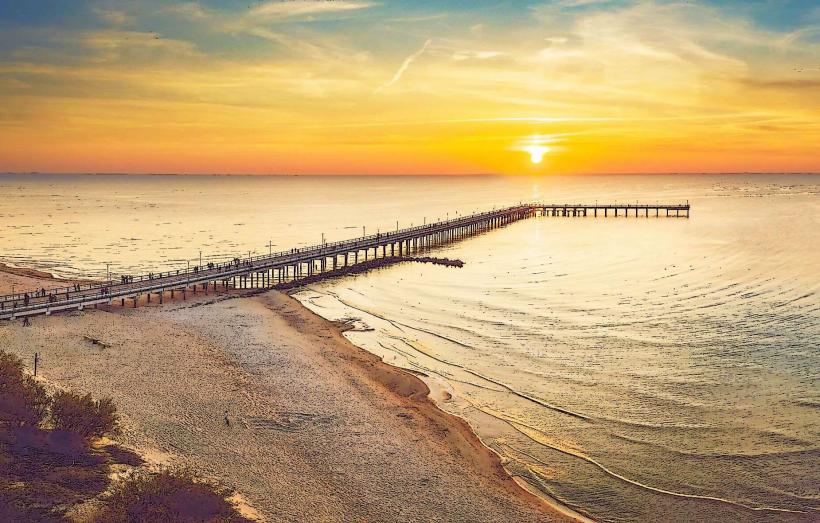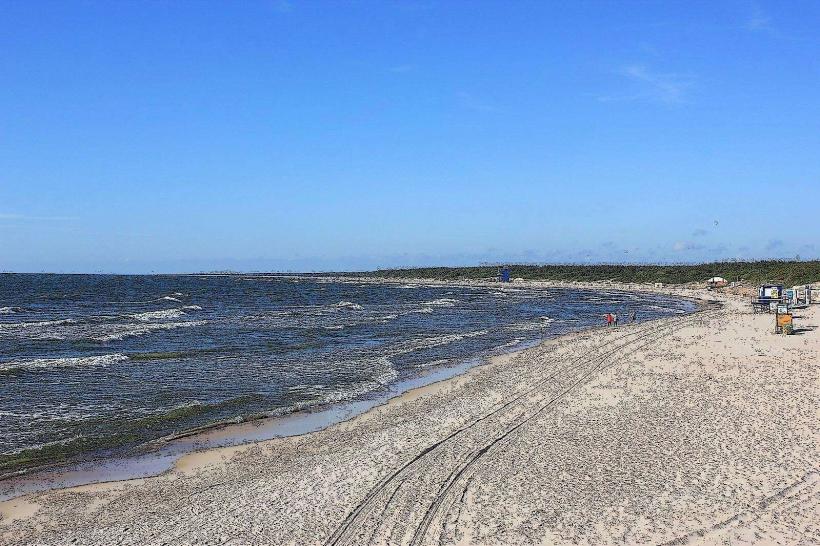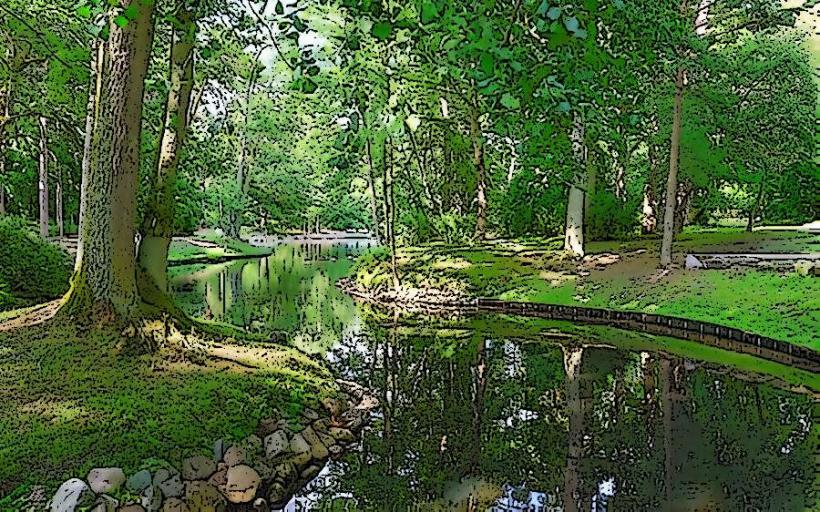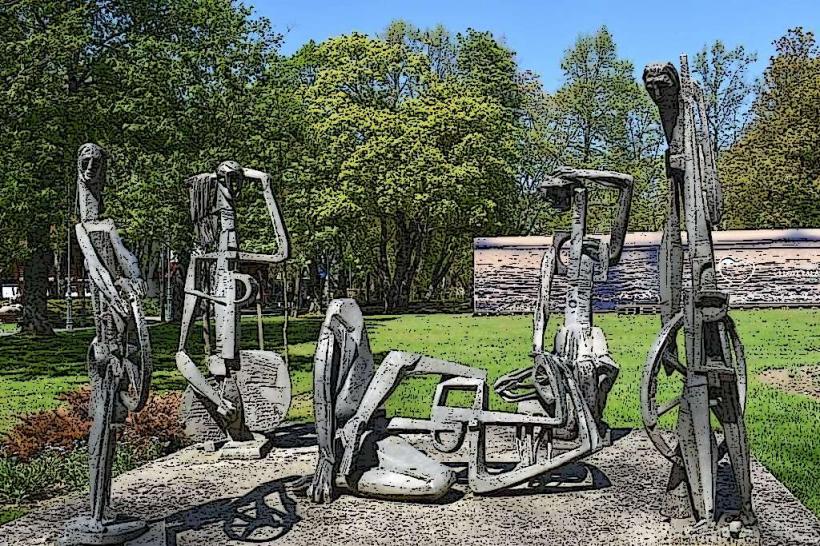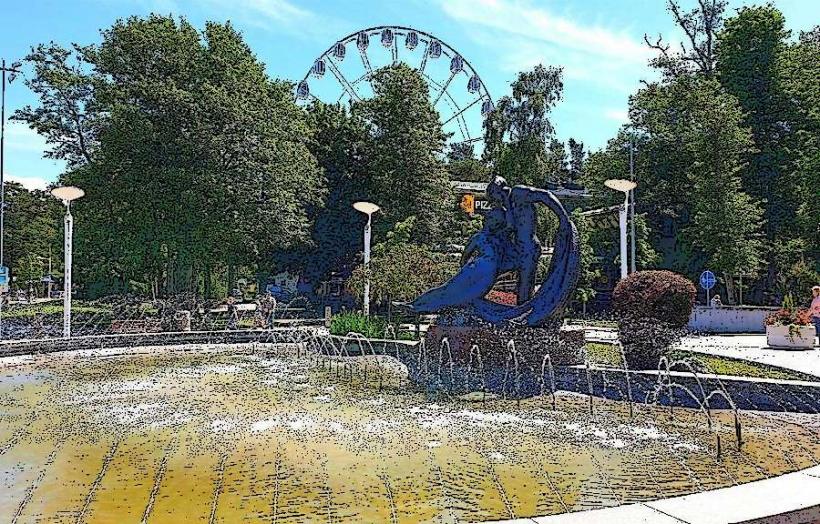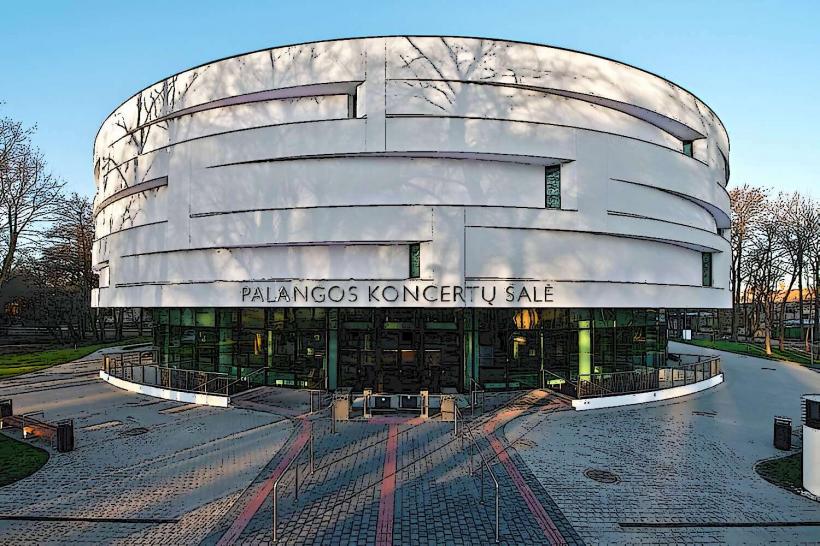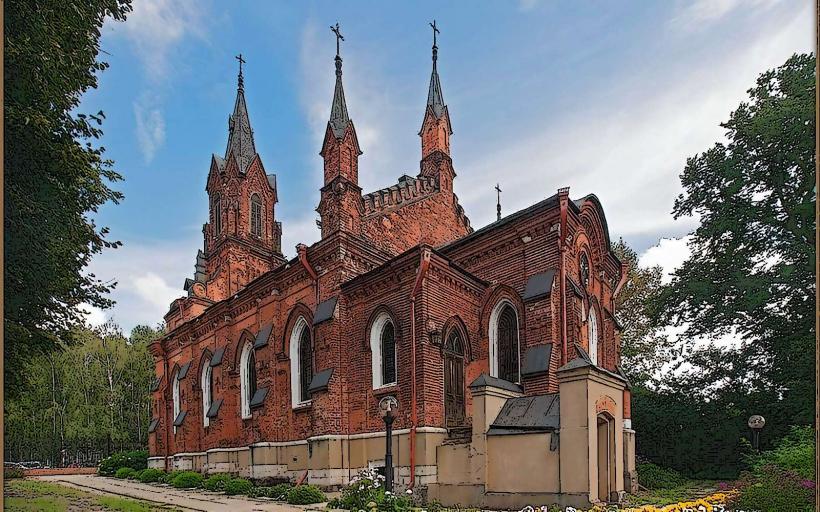Information
Landmark: Amber MuseumCity: Palanga
Country: Lithuania
Continent: Europe
The Palanga Amber Museum is a unique and important cultural institution located in the resort town of Palanga, Lithuania. Situated within the picturesque Palanga Botanical Garden, the museum is dedicated to the history, collection, and study of amber, a fossilized tree resin that has been treasured for centuries. The museum offers visitors a comprehensive look at the significance of amber in both Lithuanian culture and natural history.
History and Location
The Palanga Amber Museum is housed in the Tiskevič family palace, a beautiful neo-renaissance-style mansion built in the 19th century. The Tiskevič family, who were prominent Lithuanian nobles, played a key role in the development of the garden and the town of Palanga as a popular resort destination. The palace was originally their summer residence, and its elegant architecture and scenic location in the Palanga Botanical Garden make it an ideal setting for the museum.
The museum was established in 1963 and has since become one of the most important cultural institutions in Lithuania dedicated to amber. The museum is renowned for its extensive collection of amber specimens and its role in preserving the cultural heritage of Lithuania’s coastal regions, where amber has been historically abundant.
Amber and Its Significance
Amber is a vital part of Lithuania's natural and cultural identity. The Baltic region, including Lithuania, is one of the world’s largest sources of amber, with the most notable deposits found along the Baltic Sea. Amber has been used for thousands of years for ornamental, medicinal, and even ritual purposes. In Lithuania, amber is often referred to as "Baltic gold" because of its historical importance.
The museum highlights amber's cultural, artistic, and scientific significance, showcasing how this fossilized resin has been used in jewelry, art, and everyday life. It also examines amber's role in Lithuanian folk traditions, where it was believed to have mystical and healing properties.
Exhibitions and Collections
The Palanga Amber Museum boasts an impressive collection of more than 28,000 pieces of amber from various periods of history, making it one of the most extensive amber collections in the world. The museum’s exhibitions cover a wide range of topics, from the formation of amber to its uses throughout history. Some of the key exhibits include:
Amber Fossils: The museum displays a vast array of amber specimens, including pieces with preserved ancient insects, plants, and even small animals. These ancient inclusions, preserved in amber for millions of years, offer a fascinating glimpse into prehistoric life and provide valuable scientific insights into the ancient ecosystems of the Baltic region.
Amber Jewelry and Art: The museum showcases exquisite examples of amber jewelry and art dating back to the prehistoric period as well as more modern creations. Many of the pieces highlight Lithuania's long-standing tradition of amber craftsmanship, with examples from ancient times through the medieval and modern eras.
Amber Tools and Artifacts: Several exhibits focus on the historical use of amber in tools and artifacts. Amber was used for making amulets, sculptures, and even tools, as it was a valuable and easily worked material.
Interactive Displays: The museum features interactive displays that explain the scientific process of amber formation, its geological properties, and how it is mined and processed. The museum also explores amber’s place in ancient trade routes, where it was a sought-after material, especially in ancient Rome and Greece.
Exhibitions on Amber in Folk Art: There are sections dedicated to the role of amber in Lithuanian folk art and traditions, showcasing how amber has been used in cultural practices, such as in the making of amber beads, necklaces, and other traditional adornments.
The Building and Architecture
The Tiskevič family palace, where the museum is housed, is a stunning example of neo-renaissance architecture. The building was designed by the famous architect Franz Schwechten, who also worked on other notable buildings in the region. The palace features grand halls, ornate details, and large windows that offer beautiful views of the surrounding Palanga Botanical Garden.
The building’s historic and elegant design enhances the museum experience, providing a fitting backdrop for the ancient and artistic amber collections on display. The surrounding Palanga Botanical Garden adds to the charm of the museum, offering visitors the chance to enjoy both natural beauty and cultural heritage in one location.
Research and Education
The Palanga Amber Museum is not only a place for displaying artifacts but also an active research institution. It plays a significant role in the study of amber, particularly its scientific aspects, such as the process of its formation, its use in paleontology (for preserving ancient life), and its role in archaeology.
The museum is involved in various educational programs, offering workshops, lectures, and guided tours for visitors of all ages. It helps foster a deeper understanding of amber’s history, its cultural importance, and its role in the natural world.
Visitor Experience and Amenities
The museum provides a comprehensive visitor experience, with well-maintained exhibits, informative displays, and knowledgeable staff. Visitors can explore the museum on their own or participate in guided tours, which provide additional insights into the history of amber and its connection to Lithuanian culture. The museum also hosts temporary exhibitions and special events throughout the year.
The museum’s location within the Palanga Botanical Garden offers visitors the opportunity to explore the beautiful garden after their visit. Additionally, the museum’s proximity to Palanga Beach and the town’s promenade makes it easy for tourists to enjoy a full day of sightseeing in the area.
Conclusion
The Palanga Amber Museum is an essential stop for anyone interested in Lithuania’s natural history, cultural heritage, and the fascinating world of amber. Its extensive collection, educational exhibits, and beautiful setting in the Tiskevič family palace make it a unique destination for visitors to Palanga. Whether you're interested in the ancient fossilized insects preserved in amber, the art and craftsmanship of amber jewelry, or the historical significance of this remarkable material, the Palanga Amber Museum provides an enriching and memorable experience.

